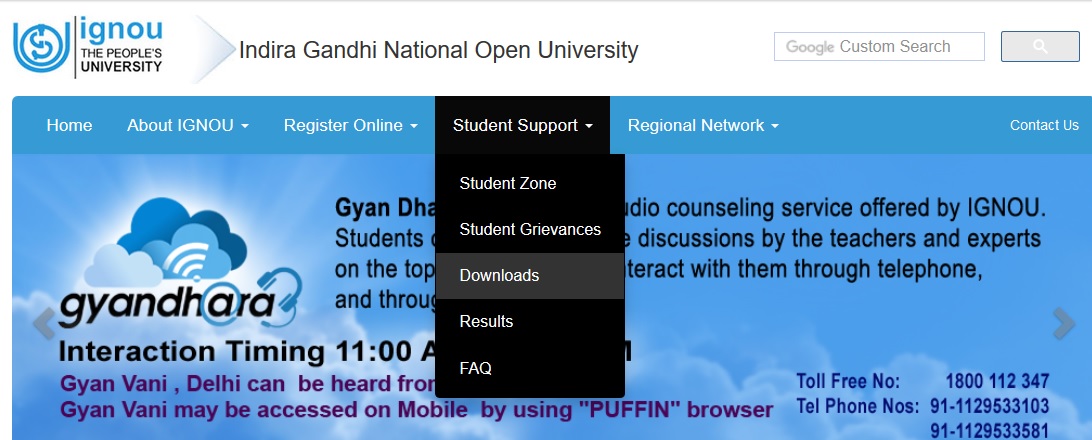ignou.ac.in B.Ed Entrance Test Question Paper : Indira Gandhi National Open University
University : Indira Gandhi National Open University
Exam : B.Ed Entrance Test
Document Type : Question Paper
Website : ignou.ac.in
Download Model/Sample Question Paper :
https://www.pdfquestion.in/uploads/5672-B.Ed.%20%202011.pdf
IGNOU B.Ed Entrance Test Question Paper
Entrance Test for B.Ed. Programme 2011 143248
Total No. of Questions = 100
Time : 120 Minutes
Related / Similar Question Paper :
IGNOU OPENNET B.Sc. Nursing Entrance Exam Question Paper
How To Fill Up The Information On The Omr Response Sheet (Examination Answer Sheet) OMR :
1. Write your complete Enrolment No. in 9 digits. Also write your correct name, address with Pin Code in the space provided. Put your signatures on the OMR Response Sheet with date. Ensure that the Invigilator in your examination hall also puts his signatures with date on the OMR Response Sheet at the space provided. You should use HB Pencil.
2. All information is to be filled up with FIB Pencil. The circles corresponding to the digit are to be darkened with an HB pencil.

3. Do not make any stray remarks on this OMR Response Sheet.
4. Write correct information in numerical digit in Enrolment No. and Examination Centre Code columns. The corresponding circles should be dark enough and should be filled in completely.
5. Each question is followed by four (or less) probable answers, which are numbered 1, 2, 3 and 4. You should select and show only one answer to each question considered by you as the most appropriate or the correct answer. Select the most appropriate answer. Then by using FIB pencil, blacken the circle bearing the correct answer number against the serial number of the question. If you find that answer to any question is none of the four alternatives given under the question you should darken the circle ‘0’.
PART-A
SECTION-I : GENERAL ENGLISH COMPREHENSION
Read the following passage carefully and choose the best answer out of the four choices given after each question that follow :
According to Albert Einstein, the non-mathematician is seized by a mysterious shudderingwhen he hears of ‘four – dimensional’ things; he is seized by a feeling, which is very familiar to thethoughts awakened by the occult. And at the same time the statement that the world in which welive is a four-dimensional space-time continuum is quite a common –
1. In order to explain a difficult topic, the author uses :
(1) simply phrased definitions (2) a quotation from Einstein
(3) an incessant metaphor (4) familiar images
2. The significant feature of a continuum, according to the passage,
(1) the divisibility of the interval between any two points
(2) an ordinary ruler’s caliber for marking
(3) its unending curve (4) its variety of co-ordinates
3. The purpose of this passage is to highlight the point that :
(1) pilots and sea captains have something in common
(2) stockmarket charts may be helpful to physicists
(3) the fourth dimension is time
(4) non-mathematicians are often afraid of the common place
4. According to the passage, an airline’s traffic manager depends
(1) latitude and longitude (2) altitude
(3) the time co-ordinate (4) the continuous curve in co-ordinate four
5. The underlying tone of this passage is :
(1) persuasive (2) differential (3) candid (4) instructive
6. According to the author, if one wishes to portray a physical
(1) make use of a time table (2) indicate how position changes in time
(3) describe it graphically (4) be aware of altitude, latitude and longitude
7. The sea captain’s example has been cited in order to :
(1) help understand a two dimensional continuum
(2) set up a logical progression (3) mitigate the gap between the engineer
(4) to sustain our interest in the reading of the passage
SECTION-II : LOGICAL AND ANALYTICAL REASONING
Directions (11 – 14) :
Each of the following two statements are followed by two conclusions. Assuming that the given statements are true, you have to decide which conclusion follows strictly from the given statements. Select your answer from the alternatives.
11. Statement : All boys are not students.
Some students are not employed.
Conclusions :
(I) – These boys are not employed. (II) – Some employed one are not boys.
(1) Only (I) follows (2) Only (II) follows
(3) Both (I) and (II) follow (4) Neither (I) nor (II) follows